
What Is Used to Make Wigs: A Comprehensive Guide
Wigs have become increasingly popular for various reasons, from fashion statements to medical necessities. But what exactly goes into making these hairpieces? Let’s dive into the world of wig construction and explore the different materials used to create these versatile accessories.
The Foundation: Wig Bases
Before we delve into the hair itself, let’s discuss the base of a wig. It’s the framework that holds the hair in place.
Wig Caps
The most common base for wigs is a wig cap. Made from materials like nylon, cotton, or a blend, these caps come in various sizes and styles to accommodate different head shapes and hair densities. Wig caps provide a comfortable and secure fit.
Lace Bases
For a more natural-looking hairline, lace bases are preferred. They are delicate, sheer materials that mimic the appearance of human scalp. Lace fronts and full lace wigs are popular choices due to their realistic look.
Other Bases
- Silicone Bases: Offering a strong hold and a natural look, silicone bases are becoming increasingly popular.
- Mono Filaments: These thin, transparent materials create the illusion of natural hair growth.
The Heart of the Wig: Hair
The type of hair used in a wig significantly impacts its appearance, feel, and longevity.

Human Hair
- Remy Hair: Considered the highest quality, Remy hair maintains its cuticle alignment, resulting in a silky, tangle-free appearance.
- Virgin Hair: Untreated and unprocessed, virgin hair offers maximum versatility in terms of styling and coloring.
- European Hair: Known for its thickness and body, European hair is a popular choice for wigs.
- Indian Hair: Offers a good balance of affordability and quality, with a wide range of textures.
- Chinese Hair: Typically straight and silky, Chinese hair is often processed to achieve different textures.
Synthetic Hair
- Kanekalon: A heat-resistant synthetic fiber that mimics the look and feel of human hair.
- Toyoken: Another heat-resistant synthetic fiber, often used for wigs that require specific styling.
- Acrylic: A less expensive synthetic fiber, but it may not hold styles as well as other options.
The Wig-Making Process
Once the base and hair are selected, the wig-making process begins.
- Hair Preparation: The hair is cleaned, conditioned, and sorted by length and texture.
- Knotting: Individual hair strands are hand-tied or machine-knotted to the wig base. Hand-tied wigs are generally considered higher quality.
- Wefting: Hair strands are sewn onto a weft, which is then attached to the wig cap.
- Styling: The wig is styled to achieve the desired look, whether it’s straight, curly, or wavy.
- Finishing Touches: Final adjustments are made, such as trimming, layering, and adding bangs.
Factors Affecting Wig Quality
Several factors contribute to the overall quality of a wig:
- Hair Density: The amount of hair used determines the wig’s fullness.
- Hair Texture: The natural curl or wave pattern of the hair affects the wig’s style.
- Construction: The method used to attach the hair to the base impacts the wig’s durability and appearance.
- Cap Construction: The type of wig cap influences comfort, breathability, and the wig’s overall fit.
Wig Care: Essential Tips for Maintaining Your Hairpiece
Proper wig care is crucial for preserving its appearance and longevity. Here are some essential tips for maintaining your wig:
Washing Your Wig
- Frequency: Wash your wig every 6-8 wears or as needed.
- Products: Use wig-specific shampoo and conditioner. Avoid regular hair products.
- Method: Gently cleanse the wig in lukewarm water, avoiding harsh scrubbing.
- Drying: Air dry your wig on a wig stand to maintain its shape.
Styling Your Wig
- Heat Styling: If your wig is made of human hair, use low heat settings. Synthetic wigs should never be heat styled.
- Products: Use wig-specific styling products to avoid damage.
- Gentle Handling: Avoid excessive brushing and pulling on the wig’s fibers.
Storing Your Wig
- Wig Stand: Store your wig on a wig stand to maintain its shape.
- Hairnet: Cover the wig with a hairnet to protect it from dust and damage.
- Cool, Dry Place: Store the wig in a cool, dry place, away from direct sunlight.

Additional Tips
- Detangling: Use a wide-tooth comb to gently detangle the wig.
- Avoid Products: Limit the use of hairspray, gel, and mousse to prevent buildup.
- Professional Cleaning: Consider professional cleaning for deep conditioning or complex repairs.
Common Wig Problems and Solutions
- Tangles: Gentle detangling with a wide-tooth comb and wig-specific conditioner can help.
- Shedding: Excessive shedding might indicate a low-quality wig. Consult the manufacturer.
- Odor: Wash the wig regularly and store it in a well-ventilated area.
By following these guidelines, you can significantly extend the life of your wig and maintain its beautiful appearance.
Choosing the Right Wig for Your Face Shape
Selecting the perfect wig involves more than just picking a style you like. Your face shape plays a crucial role in determining which wigs will flatter your features. Let’s explore how to find the ideal wig to complement your unique facial structure.
Understanding Your Face Shape
Before diving into wig styles, it’s essential to determine your face shape. Here are the primary face shapes:
- Oval: Considered the most versatile, oval faces can wear almost any wig style.
- Round: Aim for wigs that elongate the face, such as those with volume at the crown.
- Square: Soften angular features with wigs that have layers and waves.
- Heart: Balance a wider forehead with wigs that add volume around the chin.
- Oblong: Create the illusion of width with wigs that have full cheeks and chin areas.
- Diamond: Enhance your cheekbones with wigs that have volume around the temples.
Wig Cap Construction
The base of a wig, known as the cap construction, also impacts its appearance and comfort.
- Lace Front Wigs: Offer a natural hairline and versatility in styling.
- Full Lace Wigs: Provide the ultimate in naturalness and styling options.
- Capless Wigs: Lightweight and breathable, with a hand-tied wefted cap.
- Mono Filaments: Create the illusion of natural hair growth at the crown.
Wig Hair Types
The type of hair used in a wig significantly affects its look and feel.
- Human Hair: Offers the most natural appearance and can be styled with heat.
- Synthetic Hair: More affordable and low maintenance, but limited styling options.
- Synthetic Blend: Combines human hair and synthetic fibers for a balance of qualities.
Wig Length and Style
The length and style of your wig should complement your face shape and personal preference.
- Short Wigs: Ideal for round and square face shapes, offering a bold statement.
- Medium-Length Wigs: Versatile and flattering for most face shapes.
- Long Wigs: Can elongate the face, making them suitable for round and square face shapes.
- Layered Wigs: Add dimension and movement to any face shape.
- Curly Wigs: Can soften angular features and create a romantic look.
- Straight Wigs: Offer a classic and sleek appearance.
Trying on Wigs
The best way to determine which wig suits you is to try on different styles. Many wig retailers offer virtual try-on options or in-store fittings. Don’t be afraid to experiment with different looks until you find the perfect match.

Wig Care
To maintain your wig’s appearance and longevity, follow proper care guidelines:
- Gentle washing with wig-specific products
- Air drying on a wig stand
- Avoiding heat styling on synthetic wigs
- Regular brushing with a wide-tooth comb
By understanding your face shape, exploring different wig options, and following proper care, you can confidently choose a wig that enhances your natural beauty.
Conclusion
Understanding the components that go into making a wig can help you make informed decisions when purchasing one. Whether you’re looking for a natural-looking human hair wig or a stylish synthetic option, there’s a wig out there to suit your needs.




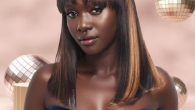
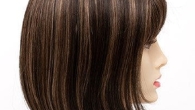

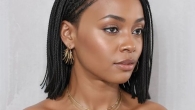
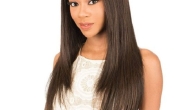
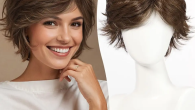
Leave a Reply